Directions (1-5): Read the following bar graph and table carefully and answer the questions given below. Bar graph shows percentage distribution of total number of vehicles (bikes and cars) in five different cities (P, Q, R, S & T) and table shows ratio of number of cars to bikes in these cities.
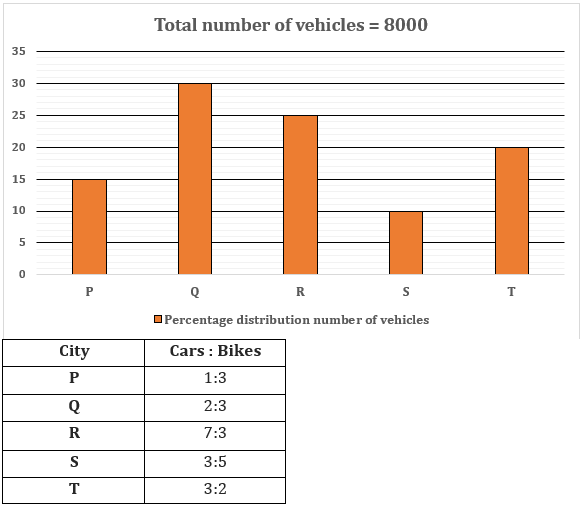

Q2. If number of buses in T is 75% of number of bikes in R, then find the ratio of number of cars in Q to number of buses in T.
(a) 32∶15
(b) 32∶17
(c) 34∶19
(d) 31∶16
(e) 36∶17
Q3. If number of cars in A is 25% less than number of bikes in Q and ratio of number of bikes in A to cars in P is 7:5 respectively, then find the total number of vehicles (cars + bikes) in A?
(a) 1250
(b) 1800
(c) 2050
(d) 1500
(e) 1450
Q4. Find the difference between number of bikes in R and average number of cars in T and S?
(a) 45
(b) 20
(c) 50
(d) 65
(e) 30
Q5. If ratio of SUV cars and Sedan cars in P & S is 5: 7 and 1: 2 respectively, then total SUV cars in P and S together is how many more/less than total Sedan cars in P and S together (Note: Total cars in any city = SUV cars + Sedan cars)?
(a) 150
(b) 250
(c) 180
(d) 125
(e) 175
Directions (6-10) :- What approximate value should come in place of question mark (?) in following questions.
Q6. 17.97% of 649.90 – 8.02% of 1149.99 = ?²
(a) 4
(b) 5
(c) 3
(d) 6
(e) 7
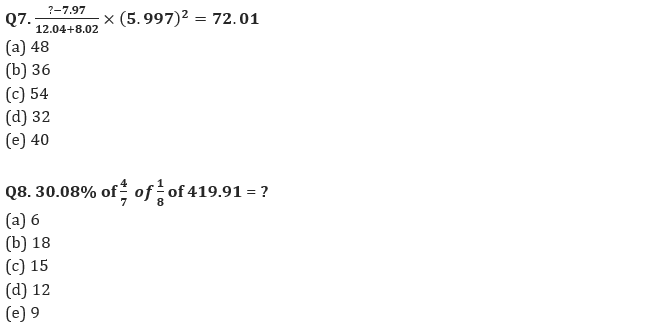
Q9. 719.97 ÷ 80.02 ÷ 60.07 × 119.97 = ?
(a) 14
(b) 20
(c) 18
(d) 10
(e) 24
Q10. 899.9 × 25.02 ÷ 35.99 = (? + 17.03)²
(a) 10
(b) 5
(c) 18
(d) 12
(e) 8
Solutions
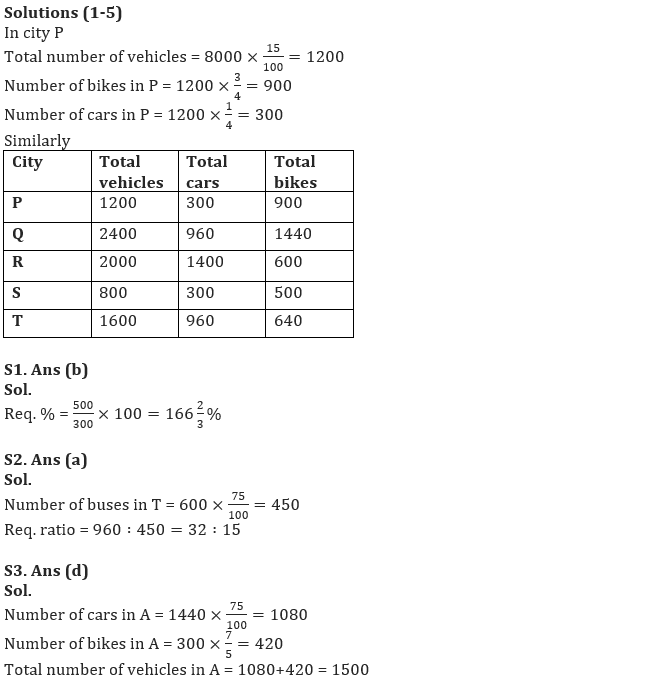
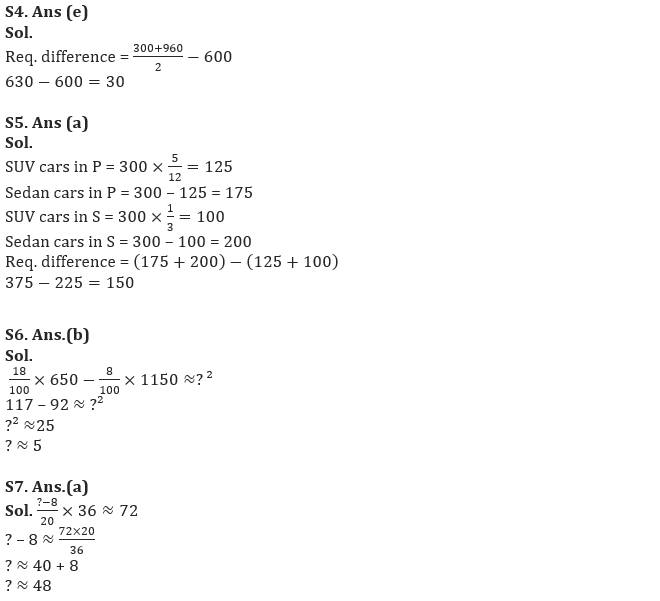
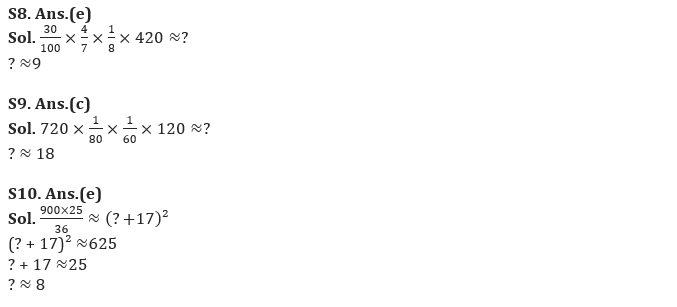





 Quantitative Aptitude Quiz For Bank Main...
Quantitative Aptitude Quiz For Bank Main...
 Quantitative Aptitude Quiz For Bank Foun...
Quantitative Aptitude Quiz For Bank Foun...





